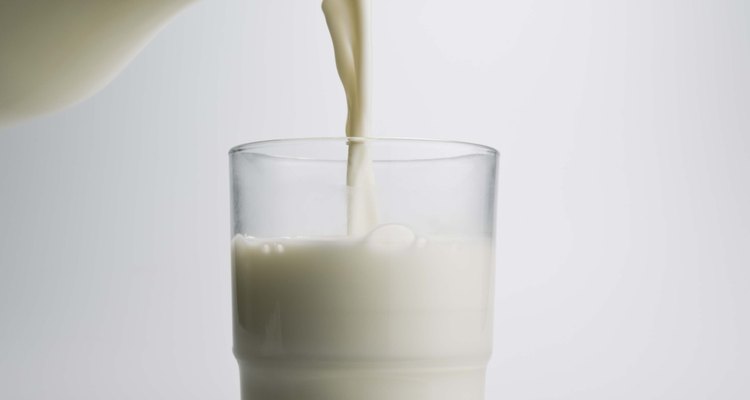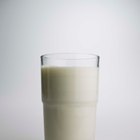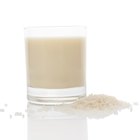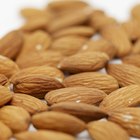
If you enjoy drinking milk but have an intolerance for lactose, you may prefer Lactaid over regular milk. Those who suffer from lactose intolerance often suffer uncomfortable symptoms such as gas, bloating and diarrhea when they consume dairy products. Lactaid is 100 percent milk with an added enzyme that breaks down lactose, which is complex milk sugar, into simple sugar that is easier to digest.
Nutrition
Because Lactaid is milk the nutritional facts are similar. There are approximately eight grams of protein per cup in both products, but milk has 0.8 more grams of carbohydrate. Lactaid has approximately 14 more calories than whole milk, which has approximately 146 calories per cup. Both products have about eight grams of fat per cup and the listed ingredients for Lactaid are milk, lactase enzyme and vitamin D3 -- with the enzyme being the only ingredient not in regular milk.
Longevity
Lactaid is ultra-pasteurized which allows it to last longer than regular milk with proper refrigeration. The process of ultra-pasteurization has no effect on taste or nutritional value, but Lactaid, like milk, should be consumed within one week after it's opened.
Taste
Lactaid contains no added sugar but may taste slightly sweeter because the lactose has been broken down into two sugars to make it easier to digest.
Other Facts
Lactaid, available in the dairy section of most supermarkets, can be used as a regular milk substitute for everything from baking to milkshakes. It may be used by anyone who suffers an intolerance to lactose. Pregnant or nursing women should consult a doctor regarding all dietary choices, including consumption of milk or Lactaid and other dairy products.
Related Articles

Dairy Substitutes for Quiche

How to Use Powdered Milk for Baking

How to Cook With Lactaid

Rice Milk Nutrition Information

Is Soy Milk Casein-Free?

How to Keep Scalloped Potatoes From ...

Difference Between Fermented Milk & ...

The Amount of Lactose in Yogurt

Can I Use Almond Milk for Alfredo Pasta ...

Can You "Sour" Almond Milk With Vinegar?

What Is the Difference Between a Shake ...

Can I Dilute Whipping Cream to Sub Milk?

How to Make Creme With Alpha Hydroxy ...

Nutrition Information for Onken Yogurt

Calories in a Bowl of Raisin Bran Cereal

How to Purchase Milk Crates

How to Make Your Own Rice Milk

Dangers of Goat Milk

What Is Balkan Yogurt?

Can You Drink Milk That Expires the ...
References
Writer Bio
Cee Donohue started as a comedy writer in 2004. She has written for "One to One Magazine" and the "South Hollywood News." Before moving to Los Angeles, Donohue attended the University of the Arts.
Photo Credits
Jupiterimages/Comstock/Getty Images